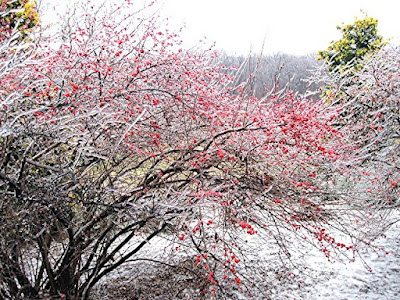 Hey, plenty of orchids are demanding. Many need greenhouse conditions, some need cool nights, some constant humidity, lots need a diurnal temperature variation greater than exists in most of our homes. Many of us have figured out how to grow Phalaenopsis, Paphiopedilum, and a handful of others. Here's another orchid you can really grow!
Hey, plenty of orchids are demanding. Many need greenhouse conditions, some need cool nights, some constant humidity, lots need a diurnal temperature variation greater than exists in most of our homes. Many of us have figured out how to grow Phalaenopsis, Paphiopedilum, and a handful of others. Here's another orchid you can really grow!I got this three years ago from the NCOS Orchid Show at the Arboretum. It flowers dependably every winter. It doesn't seem to care about humidity or to need much light; I give it less light, even, than Phalaenopsis. I don't remember ever seeing it until three or four years ago. Last year though, there were some larger specimens at the Smithsonian Orchid Show. They have inspired me to take better care of mine in the hopes of getting a better return. Repotting to a larger pot is in order.


















